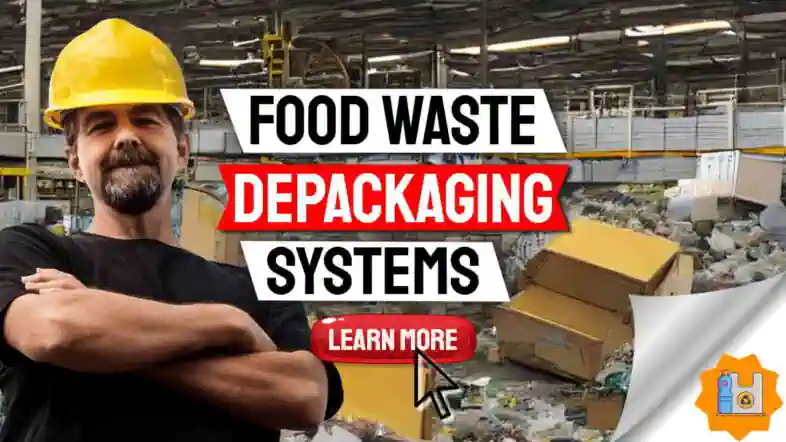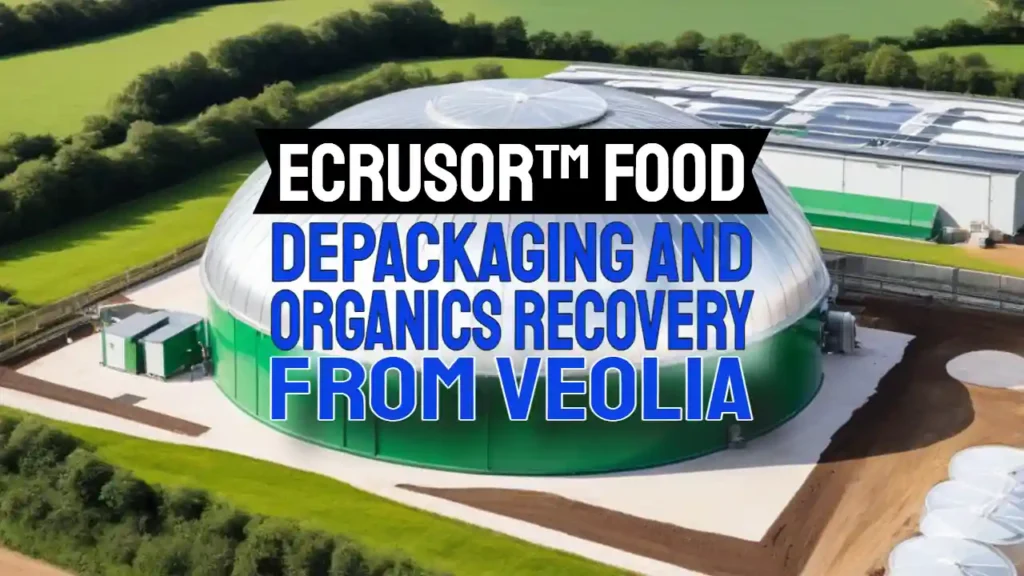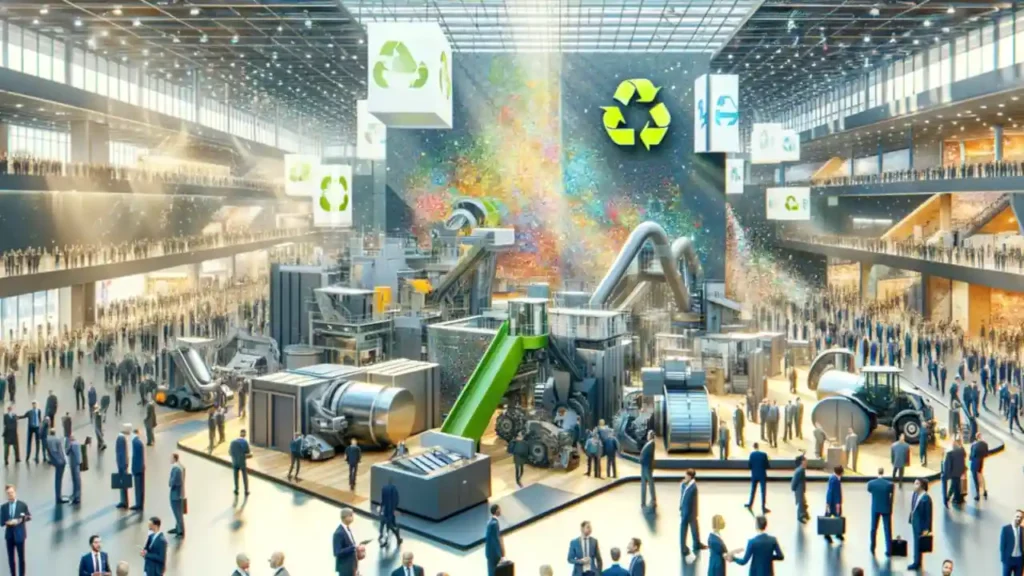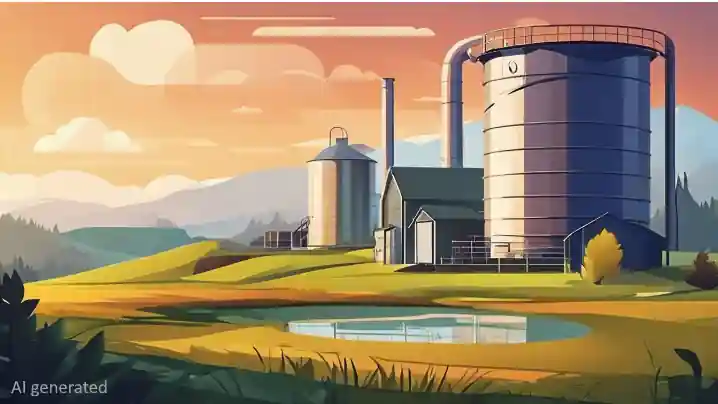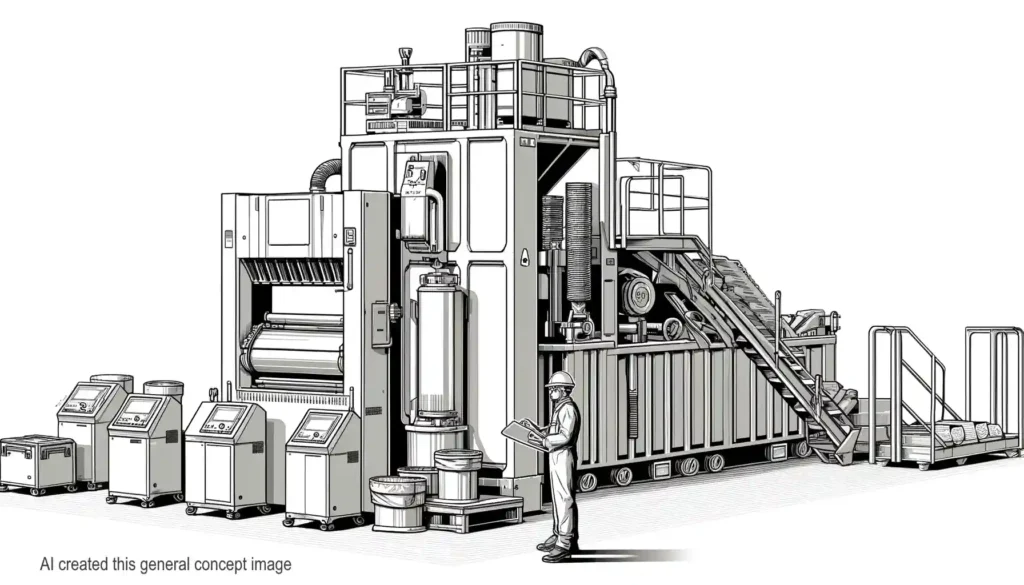Are you a restaurant owner struggling with food waste? Or perhaps you’re a local authority waste disposal officer looking for better strategies to manage the issue. Food waste is more than just an environmental concern—it affects your bottom line too.
Did you know that food waste contributes significantly to greenhouse gas emissions, impacting climate change? In fact, wasted food translates into wasted resources like water and energy used in its production. 3
This article will guide you through effective strategies for managing food waste. You’ll learn about menu planning, proper kitchen organisation, and innovative technologies that reduce waste.
Let’s explore how tackling this problem can benefit both your business and the planet. Read on!
Key Takeaways
- Sustainable food management helps conserve natural resources and reduce greenhouse gas emissions, benefiting both the environment and economy. Efficient practices can significantly cut down food waste in restaurants, homes, and grocery stores.
- Strategic approaches like menu planning and proper kitchen organisation can prevent overproduction and spoilage. For every dollar invested in food waste reduction, a restaurant may save up to seven dollars.
- Tools such as depackaging equipment (like Turbo Separator) and composting systems transform organic waste into valuable manure or renewable energy through anaerobic digestion.
- Food audits identify high-waste stages within operations, enabling better waste tracking. AI-enabled technology further aids kitchens by predicting food use accurately and reducing unnecessary purchases.
- Successful examples show that minimising landfill contributions through initiatives like composting or food donations not only saves costs but also aligns with global goals to cut down on climate-impacting emissions.
Understanding Sustainable Food Management
 Sustainable food management aims to reduce waste and ensure resources are used efficiently. It helps cut down on methane emissions and supports environmental protection.
Sustainable food management aims to reduce waste and ensure resources are used efficiently. It helps cut down on methane emissions and supports environmental protection.
Definition and importance
Food waste management means controlling how much food is wasted. This process helps cut down food that ends up in landfill. Restaurants, grocery stores, and homes waste a lot of food yearly.
Reducing food waste helps the environment and saves money. Wasted food produces as much carbon dioxide as 42 coal-fired power plants each year. It also takes up space the size of California and New York combined for farming.
By managing food better, everyone can help save resources and reduce greenhouse gas emissions. 2
Reducing wasted food is good for the environment, communities, and the economy.
Sustainable management of food ensures efficient use of natural resources from farm to table. Proper handling conserves water, energy, and soil nutrients while cutting transportation costs by reducing unnecessary transport trips. 1
Sources and causes of food waste
Around the world, one-third of all food made for people gets lost or wasted. In 2019, nearly 66 million tons of wasted food came from the food retail, food service, and residential sectors.
These numbers show that a lot of good food goes to waste instead of feeding hungry people.
A major reason for this is poor planning in kitchens and overproduction. For instance, restaurants often make too much food to meet customer demand. 3 Also, supermarkets throw away items past their expiration date even if still safe to eat.
Another problem at home is buying more groceries than needed and forgetting them until they spoil. 2
Benefits of sustainable food management
Sustainable food management can save restaurants significant money. For every dollar invested, a restaurant may save seven dollars. 4 This means less waste and more profit. Reducing food waste by 20% to 25% by 2030 could globally save between $120 billion and $300 billion each year. 4
Efficient food management helps the environment too. It reduces greenhouse gas emissions which combat climate change. By reducing waste, catering operations can cut their food costs by up to 8%. 1 Sustainable practices also improve global nutrition and help ensure better incomes for smallholder farmers.
Strategies for Managing Food Waste
Efficient food waste management starts with good planning and organisation. Proper tools like depackaging equipment and composting systems can also reduce waste effectively.
Menu planning
Menu planning can prevent food waste and put profits on the bottom line. Proper menu planning lessens overproduction and helps food service establishments operate more efficiently.
Forecasting and demand planning ensure restaurants estimate food needs accurately, cutting down waste. 6
Businesses like those in the Hospitality and Food Service sectors benefit from tools provided by initiatives such as the WRAP’s Food and Drink Courtauld Commitment. These tools help reduce wastage by extending product life.
By using these resources, restaurateurs can create a zero-waste environment while improving profitability. 5
Kitchen organisation
Organisation in the kitchen reduces food waste and boosts efficiency. Purchase ingredients based on daily sales forecasts. This helps avoid over-ordering and spoilage. 7
Store spices, cereals, pulses, and beans in airtight containers. Label them for easy identification. Use proper storage to keep food fresh longer.
Segregate dry waste like plastic and cardboard from wet waste such as vegetable scraps. This makes recycling easier. Compost kitchen waste to create valuable soil amendments. 6
Set up clear zones for different tasks, like prep areas and cooking stations. This saves time and keeps everything orderly.
Avoiding over-ordering
Efficient kitchen organisation helps avoid over-ordering. Check existing stock before placing grocery orders to know what’s already available. Purchase only what is required to prevent duplicate buying and reduce waste. 7
Smart shopping and meal planning can help households save money and minimise waste. In the UK, households could save more than £700 each year by eliminating avoidable food waste. 4 In the US, the average family would save approximately $1,800 by reducing food waste.
Use these strategies to lower your carbon footprint and contribute to environmental sustainability.
Proper waste segregation
Avoiding over-ordering can reduce clutter in the kitchen, but it is also key to organise waste correctly. Proper segregation helps manage food waste effectively. Restaurants should separate solid waste from wet waste using distinct bins.
In San Francisco, this method is mandatory for both restaurants and offices. 2
Segregation facilitates composting and recycling at events and in daily operations. The National Environment Agency (NEA) encourages redistributing unsold or surplus food to organisations that distribute it further.
They have a guidebook on implementing proper food segregation practices which can assist restaurants significantly. 8
Depackaging equipment
Depackaging equipment like the Turbo Separator can separate organic material from non-organic packaging. 9 The Drycake Twister system processes municipal source-separated organic waste with a capacity of 8 to 12 tons per hour.
This ensures a clean, dry reject output suitable for additional recycling. 10
These systems enhance the quality of materials for energy extraction through anaerobic digestion. They help manage food waste efficiently while promoting environmental protection and landfill diversion.
With such tools, restaurant owners, waste managers, and local authority officers can significantly reduce their carbon footprint and aid in sustainable development.
Composting
Composting turns food waste into valuable nutrients. This process improves soil quality and boosts crop growth. Many restaurant owners find it easy to compost kitchen scraps like vegetables and meat trimmings.
By doing so, they recycle organic waste into manure.
This method helps reduce landfill waste and lowers carbon dioxide emissions. It also leads to better water quality by reducing runoff from landfills. The Environmental Protection Agency (EPA) recommends composting as a key part of sustainable food waste management strategies, making it a vital tool for local authorities and restaurant owners focused on environmental protection. 211
Anaerobic digestion pulp as AD feedstock
Anaerobic digestion breaks down organic waste in the absence of oxygen. This process creates biogas, which is a renewable energy source for heat and power generation. The digestion pulp left over, known as digestate, acts as a natural fertiliser rich in nutrients. 13
Using anaerobic digestors helps divert food waste from landfills. Food waste makes up 58% of landfill methane emissions according to the EPA. 12 By managing this waste through anaerobic digestion, restaurants and local authorities can reduce their environmental impact significantly while producing valuable by-products like biogas and fertilisers.
Challenges and Solutions
Managing food waste requires investment and planning. Many industries face global challenges, but solutions are available.
Investment in food waste management
Investing in food waste management holds immense potential. Restaurant owners can see a return on investment (ROI) of 200%-1,000% within the first year. This investment typically ranges from 8-12% of the total food spend but yields significant cost reductions and efficiencies. 4
Implementing proper waste segregation, composting, and utilising depackaging equipment can improve sustainability. Reducing wasted food not only saves money but also helps address climate change and reduces carbon dioxide emissions. 14 Aimed investments lead to better menu planning, avoiding over-ordering, and ultimately contributing to zero waste goals.
Global impact and solutions
Food wastage affects the entire planet. One-third of food made for humans is lost or wasted globally, contributing 8-10% of greenhouse gas emissions. 16 Restaurant owners, waste managers, and local authorities must focus on reducing these numbers to combat climate change.
The UN’s Sustainable Development Goals aim to halve food waste by 2030, offering a clear target for everyone involved.
Across the globe, cities adopt new solutions like composting and anaerobic digestion. Composting turns organic rubbish into valuable fertiliser for soils. Anaerobic digestion converts waste into biogas for energy production. 15 Restaurants can also donate extra food to feed undernourished people instead of landfilling it. Implementing these strategies helps build a circular economy while promoting environmental justice.
Challenges for the hospitality industry
The hospitality industry faces significant challenges with food waste, contributing to nearly 12% of total food loss and waste. 3 Overproduction can lead to excess food that doesn’t get consumed.
Serving issues and plate waste also add to the problem. Buffets often overproduce, resulting in large quantities thrown away.
Meat-based restaurants face unique hurdles due to spoilage and preparation scraps. 3 Airlines must balance strict safety laws with minimising wastage on flights. Poor management practices damage reputations, making it crucial for hotels and restaurants to focus on prevention and reduction policies for more sustainable operations. 17
Tools and Resources for Food Waste Management
Food waste audits help restaurants track their waste. Modern software and technology improve waste management efforts.
Food waste audits
Food waste audits identify stages of high waste during service. They track and measure food loss in restaurants, hospitals, and hotels. In hospitals, up to 50% of overall waste stems from food. 18 Effective audits help reduce this significantly.
Restaurant owners benefit from audits by tracking plate waste and production waste. Results show whether they remain below 30% for plate waste and 10% for production wasted food scale levels. 19 Insights lead to action plans that align with sustainable practices and food safety laws, addressing municipal solid wastes effectively through composting or donation programmes.
Software and technology
– Food waste audits
After conducting food waste audits, implementing software and technology provides even greater benefits. 20 AI-enabled tools can revolutionise food waste management by tracking and predicting food use.
Digital technologies help kitchens monitor their operations meticulously. On average, these systems can reduce waste by 65%.
Smaller establishments might save up to £5k annually using such efficient tools. Larger sites could see savings over £50k per year. Leading companies have successfully reduced their environmental impacts by integrating sustainable practices with advanced tech solutions like this. 21
Kitchens benefit greatly from real-time monitoring capabilities enhanced through artificial intelligence (AI). The automation aids in better organisation and cutting down on unnecessary purchases thereby conserving resources effectively.
Leading food waste management companies
Winnow uses AI technology to automate the process of waste management. They help hotels, quick service restaurants, and cruise ships reduce food waste. Using Winnow’s system can cut kitchen waste in half and boost profits. 2COMPASS GROUP and ISS FACILITY SERVICES focus on reducing food loss. These companies also enhance customer experience by managing waste efficiently. Their services contribute to economic growth by promoting sustainable practices in food production and distribution. 22
Drycake Twister depackaging system with Seditank
The Drycake Twister depackaging system processes up to 12 tons of organic waste per hour. It handles garden waste and household food scraps efficiently. The unit separates packaging from the organic content, ensuring clean, dry reject output suitable for recycling. 23
The Seditank further treats this material by removing inert items like grit and glass. This ensures only pure organic matter moves forward. Anaerobic digestion then converts this into biogas, a form of renewable energy.
Restaurant owners can reduce landfill use and manage waste sustainably with this system. 24
Success stories and tips
Restaurant owners like those at 168 Market Store 806 and 99 Ranch Market Store 3 have made big strides in waste reduction. Their efforts have significantly increased food waste diversion from landfills, leading to less trash and more recycling. 25 These programmes also boast lower energy and water use, showing that sustainable practices can save costs while helping the planet.
For tips to achieve similar success, start with a food waste audit. This will highlight where most of your waste comes from. Next, consider using software tools designed for waste management to track and reduce food loss efficiently.
Implementing composting systems or working with local charities for food donation are other great ways to minimise landfill contributions while supporting the community. 4
Conclusion
Food waste management involves prevention, recovery, recycling, and disposal strategies. Tools like food audits and AI software help track waste in hospitality sectors. Composting and anaerobic digestion can turn waste into energy or fertiliser.
Simple steps such as menu planning and proper segregation are effective. Success stories show the potential to save costs and reduce carbon emissions. Together, we can create sustainable practices that benefit both businesses and our planet.
FAQs
1. What is food waste management?
Food waste management involves strategies to reduce, recycle, or reuse food that would otherwise be thrown away.
2. How can we prevent food waste at home?
We can plan menus carefully, use leftovers creatively, and store food properly to avoid household wastes.
3. What are the benefits of using biodegradable materials in packaging?
Biodegradable materials break down naturally and reduce the amount of waste landfilled, helping lower carbon dioxide emissions.
4. How do food donation programmes help with managing waste?
Food donation programmes give surplus foods to those who are food-insecure instead of wasting it. This supports human consumption and reduces overall wastage.
5. Can businesses upcycle wasted foods for other uses?
Yes! Businesses can upcycle wasted foods by creating new products or converting them into energy through anaerobic digestion or combustion processes like incineration.
6. What role does infrastructure play in managing food distribution effectively?
Good infrastructure ensures efficient transport and storage of foods from farms to retailers which helps minimise loss along the life cycle chain.
References
- ^ https://www.mdpi.com/2071-1050/15/13/10213
- ^ https://www.ncbi.nlm.nih.gov/pmc/articles/PMC11069547/
- ^ https://www.sciencedirect.com/science/article/pii/S0959652620329061
- ^ https://www.wri.org/insights/reducing-food-loss-and-food-waste (2023-04-20)
- ^ https://www.wrap.ngo/resources/guide/menu-planning-preventing-food-waste (2015-01-29)
- ^ https://www.researchgate.net/publication/350682634_Strategies_to_reduce_food_waste_in_the_foodservices_sector_A_systematic_review (2021-04-14)
- ^ https://altametrics.com/blog/food-waste-management-6-strategies-to-reduce-the-impact-of-food-waste/
- ^ https://www.nea.gov.sg/our-services/waste-management/3r-programmes-and-resources/food-waste-management/food-waste-management-strategies
- ^ https://thinkviably.com/resource-library/what-is-food-waste-depackaging/ (2024-04-29)
- ^ http://www.organics-recycling.org.uk/uploads/article1762/Depacking%20Equipment.pdf
- ^ https://www.researchgate.net/publication/366643317_Research_Update_on_Food_Waste_Composting_A_Bibliometric_Analysis_and_Way_Forward (2022-12-28)
- ^ https://www.researchgate.net/publication/330778081_Food_waste_digestion_anaerobic_digestion_of_food_waste_for_a_circular_economy
- ^ https://assets.publishing.service.gov.uk/media/5a7968b4e5274a2acd18c991/anaerobic-digestion-strat-action-plan.pdf
- ^ https://www.ncbi.nlm.nih.gov/pmc/articles/PMC10021016/
- ^ https://www.sciencedirect.com/science/article/pii/S0956053X18301740
- ^ https://www.ncbi.nlm.nih.gov/pmc/articles/PMC10073629/
- ^ https://www.linkedin.com/pulse/hospitality-waste-management-practices-solutions
- ^ https://onlinelibrary.wiley.com/doi/full/10.1111/1747-0080.12768
- ^ https://refed.org/food-waste/the-solutions/
- ^ https://journals.sagepub.com/doi/10.1177/0734242X221135248 (2022-11-15)
- ^ https://www.lightspeedhq.co.uk/blog/food-waste-emerging-technologies/ (2024-03-19)
- ^ https://hau.repository.guildhe.ac.uk/id/eprint/17611/1/Iona%20Huang%20Food%20waste%20management%20upload.pdf
- ^ https://www.biogasworld.com/news/latest-drycake-twister-depackaging-and-separation-system-in-canada-commissioned-in-montreal/
- ^ https://www.twisterseparator.com/
- ^ https://www.epa.gov/circulareconomy/success-stories-reducing-waste (2023-10-25)
Discover more from IPPTS Depackaging Equipment Insights
Subscribe to get the latest posts sent to your email.


